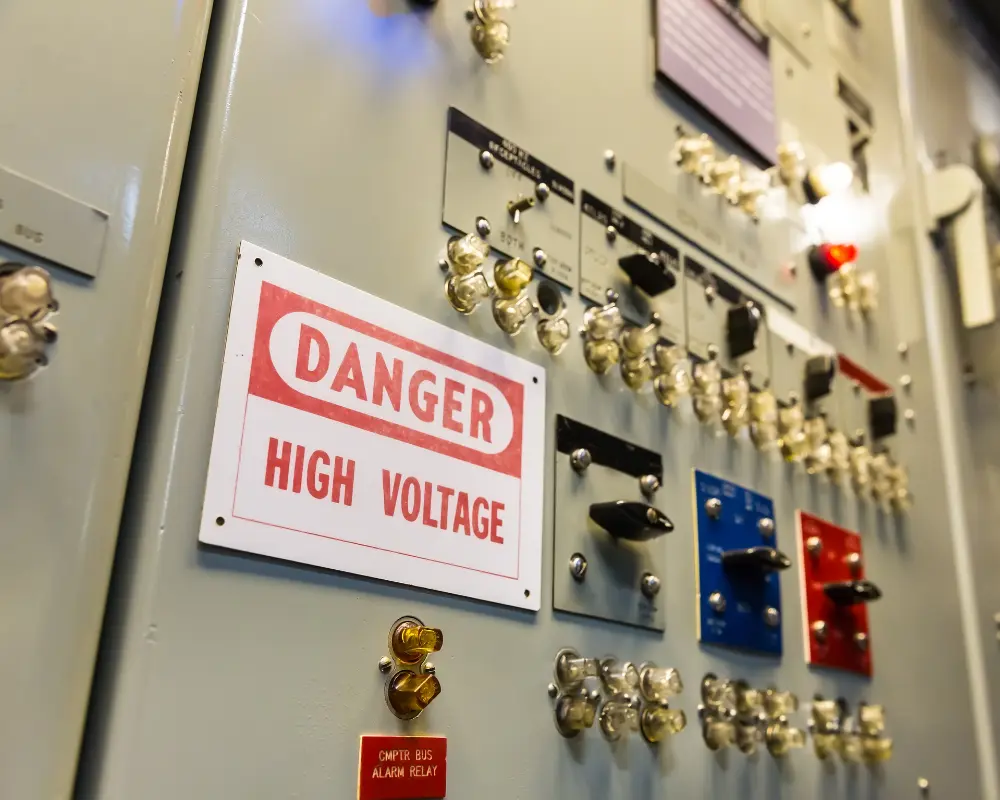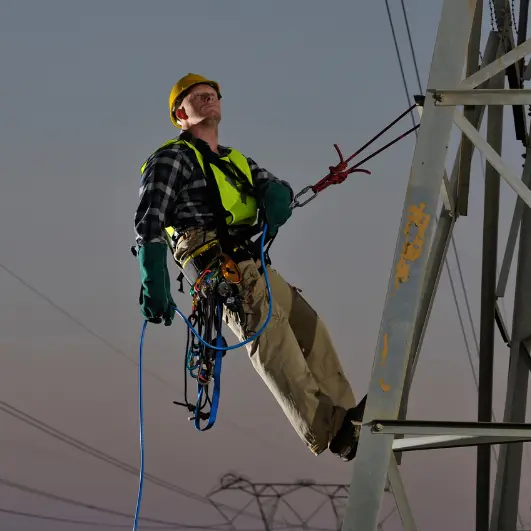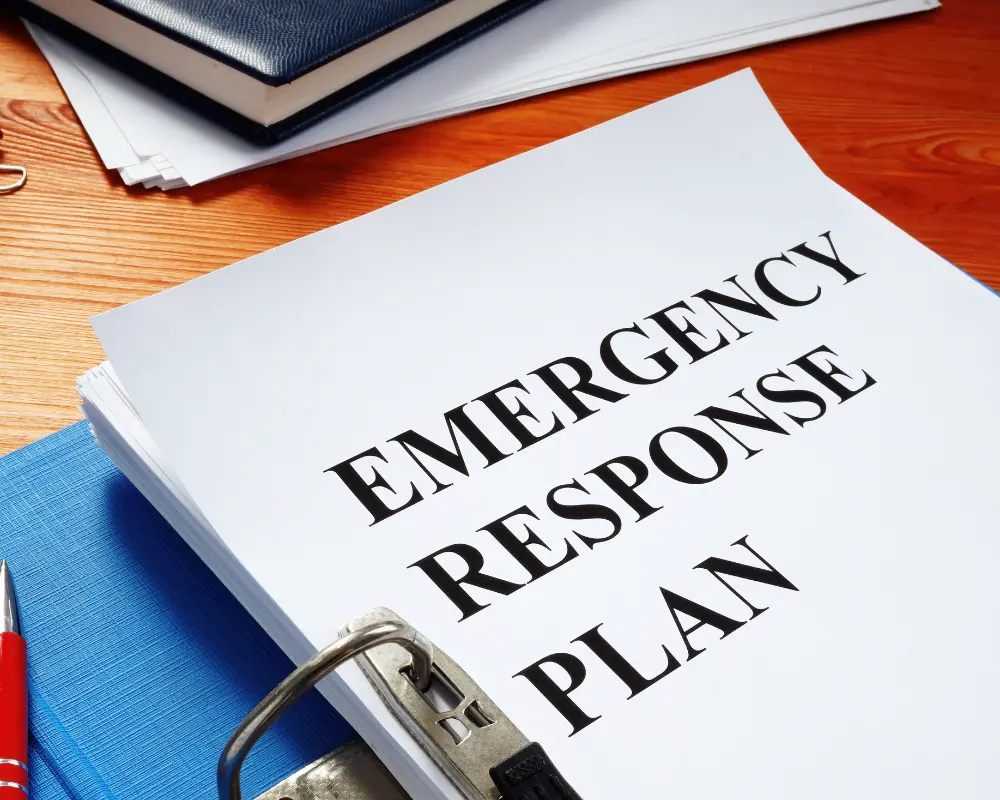The utility and telecom industry has seen remarkable growth, extending its reach to the farthest corners of the world. At the heart of this expansion are the dedicated lone workers who tirelessly ensure our connectivity, even in the most remote and challenging environments. However, their solitary roles often expose them to unique and potentially life-threatening challenges. How can we provide essential protection and support for these workers?
The Role of Lone Workers in the Utility and Telecom Industry
Lone workers in the utility and telecom sectors often find themselves in situations that many of us would deem challenging, if not outright daunting.

- Remote Technicians: Imagine the aftermath of a hurricane. Roads are flooded, power lines are down, and entire neighborhoods are in darkness. It’s the lone technician who trudges through mud and debris to restore power. An example of this is the thousands of utility workers who rallied to restore power during Hurricane Sandy’s aftermath in 2012.
- Telecom Tower Climbers: These professionals are the backbone of our digital age. Remember the last time your call dropped in a remote area? It’s the lone telecom worker, scaling towers hundreds of feet high, who ensures this happens less often. They brave the elements, in scorching sun or freezing cold, to keep us connected.
- Emergency Responders: Natural disasters and unexpected system failures don’t stick to a 9-5 schedule. Hence, many lone workers operate during odd hours, risking personal safety to ensure societal continuity. For instance, during the 2020 wildfires in California, utility workers toiled round the clock, navigating through smoke and flames to maintain electrical infrastructure.
The Multifaceted Risks to Lone Workers
While these brave individuals tackle formidable challenges head-on, it’s essential to recognize the various risks they confront daily.

- High-voltage Equipment: A lone worker might be repairing a transformer when a sudden surge occurs. Without immediate assistance or intervention, such mishaps can have dire consequences.
- Weather Extremes: In the sweltering heat of Arizona, where temperatures can soar past 110°F, or the freezing cold of Alaska, utility workers face weather-related challenges that most occupations never encounter.
- Overexertion: A lone worker might be on his 10th consecutive hour, trying to restore services in a critical area. The toll this takes on the body can be immense, leading to fatigue, dehydration, or more severe health issues.
- Late-Hour Vulnerabilities: Working in an isolated area in the dead of night comes with its dangers. There have been instances where utility workers have been assaulted or robbed while performing their duties.
- Connectivity Issues: Imagine being in a situation that requires immediate assistance, but you’re in a connectivity “dead zone”. This isn’t a hypothetical scenario but a daily challenge for many, especially those in sprawling states like Wyoming or remote parts of Maine.
Recognizing these hazards, the question arises: how can industries better support and protect these workers?
How to Ensure Lone Worker Safety

Protecting the well-being of lone workers is the right thing to do, but it’s also a smart business decision. Let’s explore the best practices companies can start implementing that can make a world of difference.
Regular Training
Imagine training sessions where a telecom worker is taught to handle equipment malfunctions at towering heights, simulating real-life challenges. For instance, companies like Verizon and AT&T have introduced rigorous training modules that mimic on-field challenges, preparing their workforce for unexpected events.
In addition, basic medical training, like CPR and wound care can be lifesavers, especially in remote locations where immediate medical aid might be hours away. Consider the difference it could make for a utility worker who, after an accident, could administer first aid to themselves, preventing further complications until help arrived.
Check-in Protocols
Implementing a protocol where workers send status updates every hour, for example, can quickly identify if someone is facing an issue. These scheduled check-ins can significantly reduce response times in emergencies. Should a worker miss a check-in, automated systems can flag this, prompting immediate action.
Emergency Response Plans

An emergency in urban New York might require a different approach than one in rural Montana. Companies should have strategies tailored to various scenarios and terrains. A utility company in Southern California, for instance, should have distinct response plans for wildfires versus urban electrical malfunctions. Regularly testing these plans ensures they’re more than just words on paper.
Real-time Monitoring and Communication Systems:
One of the most powerful ways to protect lone workers is by implementing systems that provide vital signs and the exact location of workers. Think of a utility worker in North Carolina trapped under debris after a landslide; real-time GPS tracking can help ensure their swift rescue. These same monitoring tools can also send alerts if, for instance, a worker’s heart rate spikes or body temperature reaches dangerous levels.
With the right tools, training, and technology, companies can make significant strides in safeguarding their most valuable assets: their employees. While there are many strategies companies can utilize to enhance lone worker safety, technological innovations like those from SlateSafety are helping to take that protection to the next level.
SlateSafety’s Role in Lone Worker Safety
In today’s rapidly growing utility and telecom sectors, lone workers operate in some of the most remote and challenging terrains, ensuring that the world remains connected. Their dedication, while invaluable, comes with considerable risks. Whether facing extreme weather, the dangers of high-voltage equipment, or the vulnerabilities of working in isolation, these individuals deserve the best protective measures the industry can offer.
SlateSafety offers innovative wearable technology solutions tailored to these very challenges. With features such as fall detection, real-time alert systems, and seamless integration into current infrastructures, SlateSafety offers immediate responses to emergencies, potentially averting disasters.
The well-being of these workers isn’t just an obligation—it’s a testament to a company’s values. Prioritize the safety and security of your lone utility and telecom professionals with SlateSafety, and lead the industry in responsibility and foresight. Invest in SlateSafety, and invest in a brighter, safer future for all.

